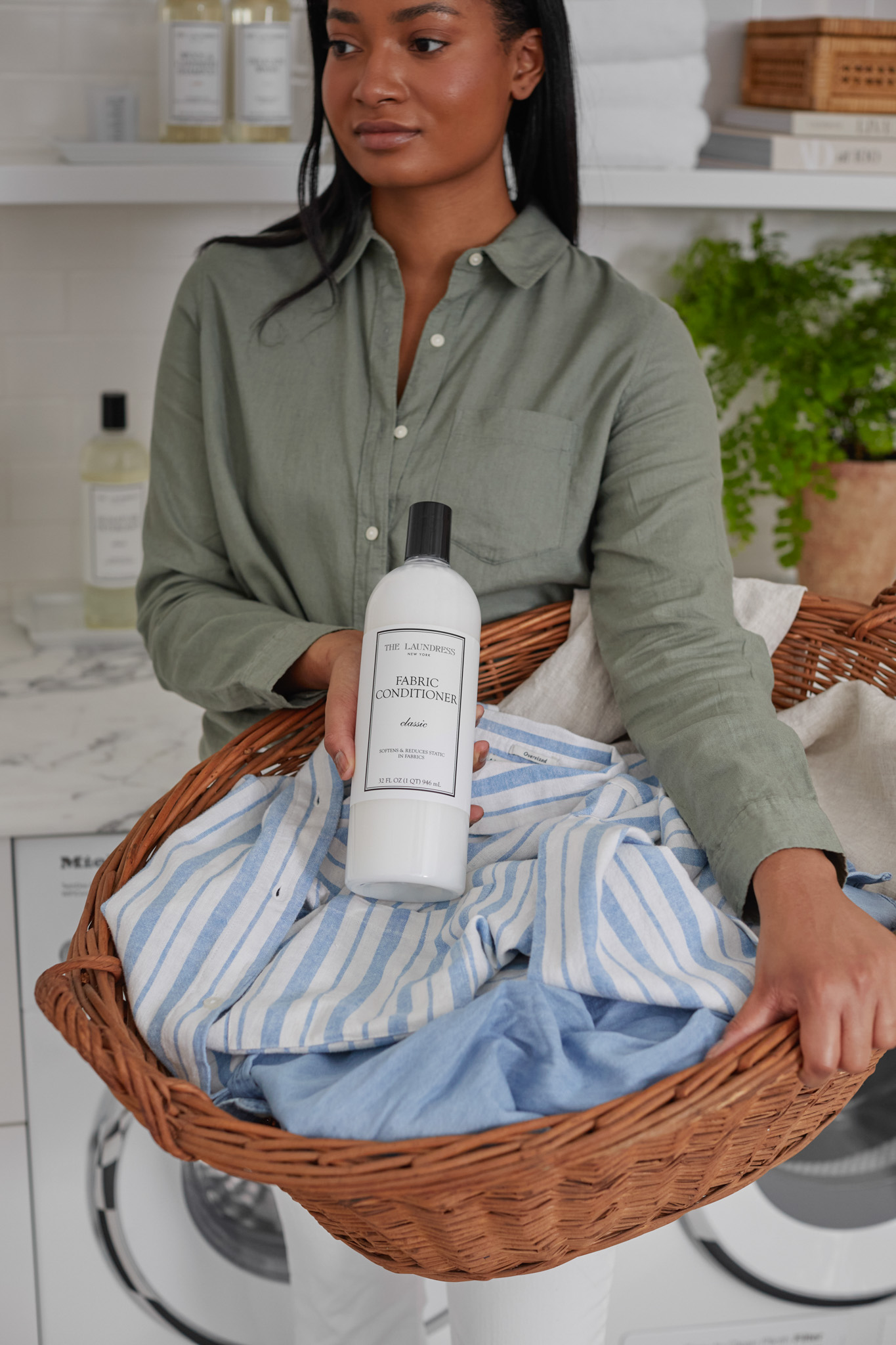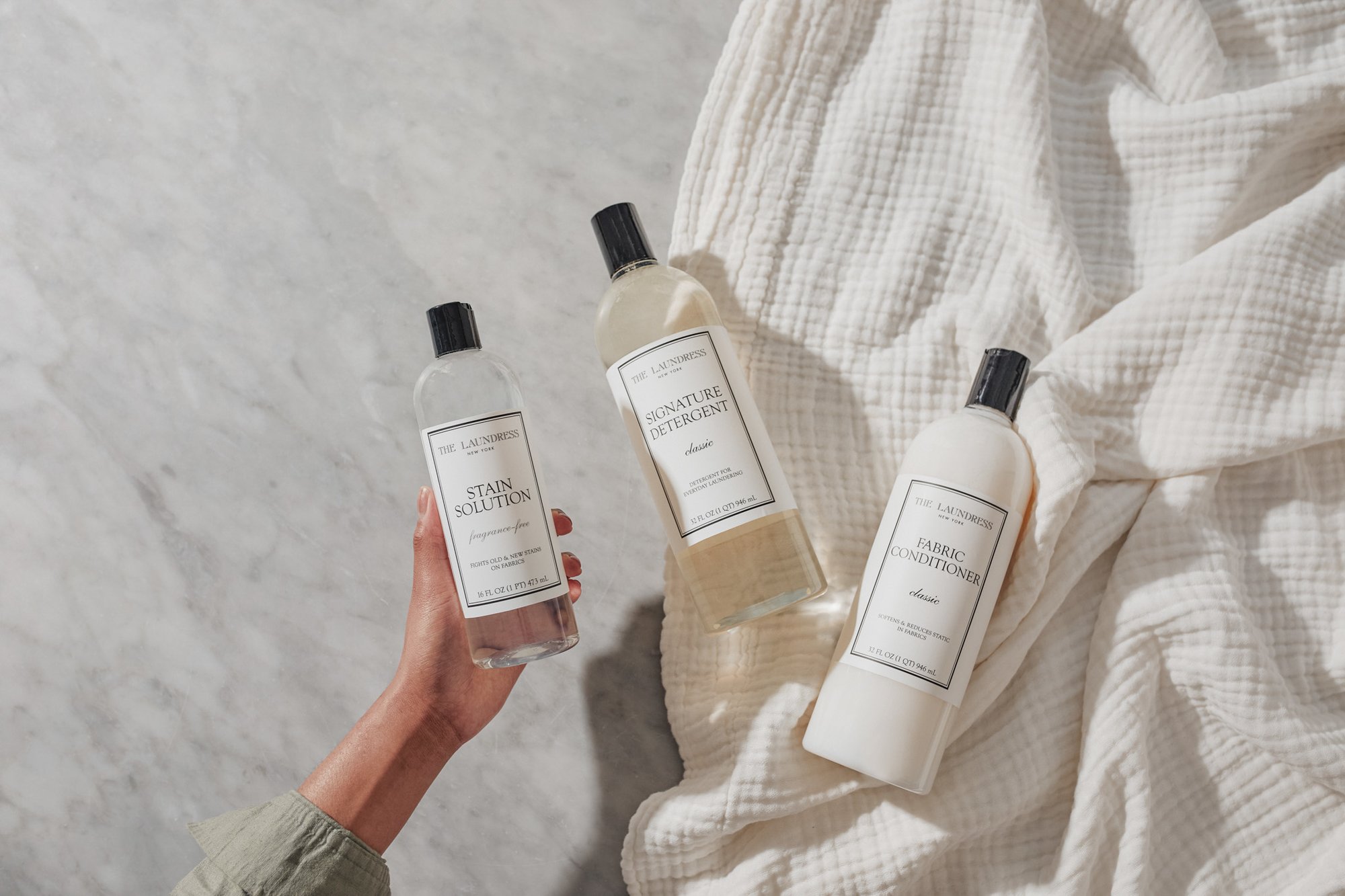
Dry Your Clothes
Machine drying is the quickest and most intense method for drying wet items. It is important to note that most damage occurs in the dryer rather than in the washing machine. To best preserve fibers and to save energy, air dry whenever possible. Laundry is not most people's favorite pastime (though we certainly love it around here). Beyond refining fabric-care techniques, we're in constant pursuit of the "ultimate clean laundry smell" and the perfect fabric finish for each of our precious garments. That's why we've put together the ultimate drying guide to teach you when to air dry, when to machine dry, and best drying practices for everything from everyday fabrics to knits and delicates. Your Quick Drying Guide: There are two ways to air-dry an item: Line or hang drying and laying flat to dry! To "line dry" an item means that it is hanging, whether it's draped over a line, attached to a line with clothespins, or positioned on a hanger. Line drying not only helps to preserve fibers, colors, shape, and elasticity, but also saves energy used during machine drying and reduces wrinkling. Some items, such as sweaters, knits, and heavier items with embellishment can't handle the stress or tension on the fibers caused by hanging, especially when they are wet. Fibers are more malleable when they are wet, so material may become deformed or warped when hung. Instead, lay these items flat to dry, positioned in their natural shape. Gentle reshaping can also help fabrics to dry with less wrinkles and creases.Air-Drying
If you're using a hanger: Position items properly on the hanger so they don't stretch or become misshapen as they dry. When hanging tops, make sure the hanger isn't wider than the item. Otherwise, the shoulder area may stretch, leaving points on the shoulders and arms. Never hang knits such as sweaters. To expedite drying: Place the item on top of a towel, making sure it's flat and in its original shape. Then roll it up in the towel (like a sleeping bag) to remove excess water. For faster drying, use more than one towel and repeat several times.
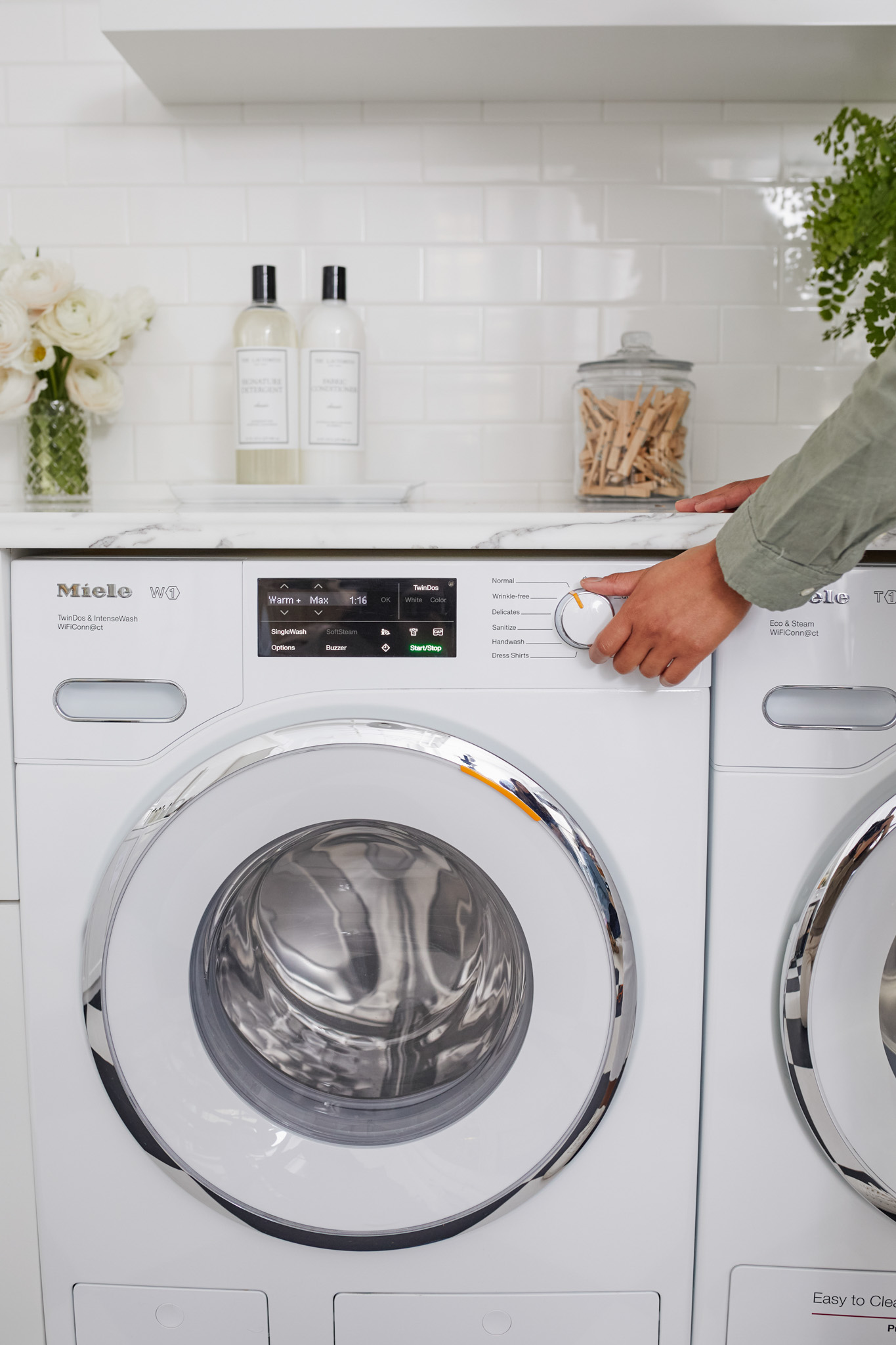
Machine Drying
While machine drying is the most effective method for drying wet items, it's also the most intense, and not always the best delicate dryer setting. The high heat and tumble of the dryer can cause some fabrics to weaken, shrink, or fade. The longer the cycle and the higher the temperature, the greater the risk of damage. To avoid shrinkage on more delicate items (like your favorite vintage tee), set the dryer to the low heat dryer setting or low tumble dryer setting, which is the best delicates dryer setting. Normal cycle: This cycle uses high temperature and high tumble. Select the normal cycle for everyday laundering, home linens, and durable fabrics. The normal cycle is the ideal linen, and cotton setting. Permanent Press cycle: This cycle, designed for synthetics, uses medium heat and lower tumble. We tend to air dry our synthetics, as it's easier on their elasticity. If we do use the machine for these fabrics, we opt for the delicate cycle instead. Delicate cycle: This cycle uses the lowest temperature and the lowest tumble. Since delicate items and woolens should not be put in the dryer, we often use this setting for drying synthetics, lingerie, and other heat-sensitive everyday items.
How often should I clean the lint tray?
Clean the tray before every new drying cycle, especially if the previous load included towels!
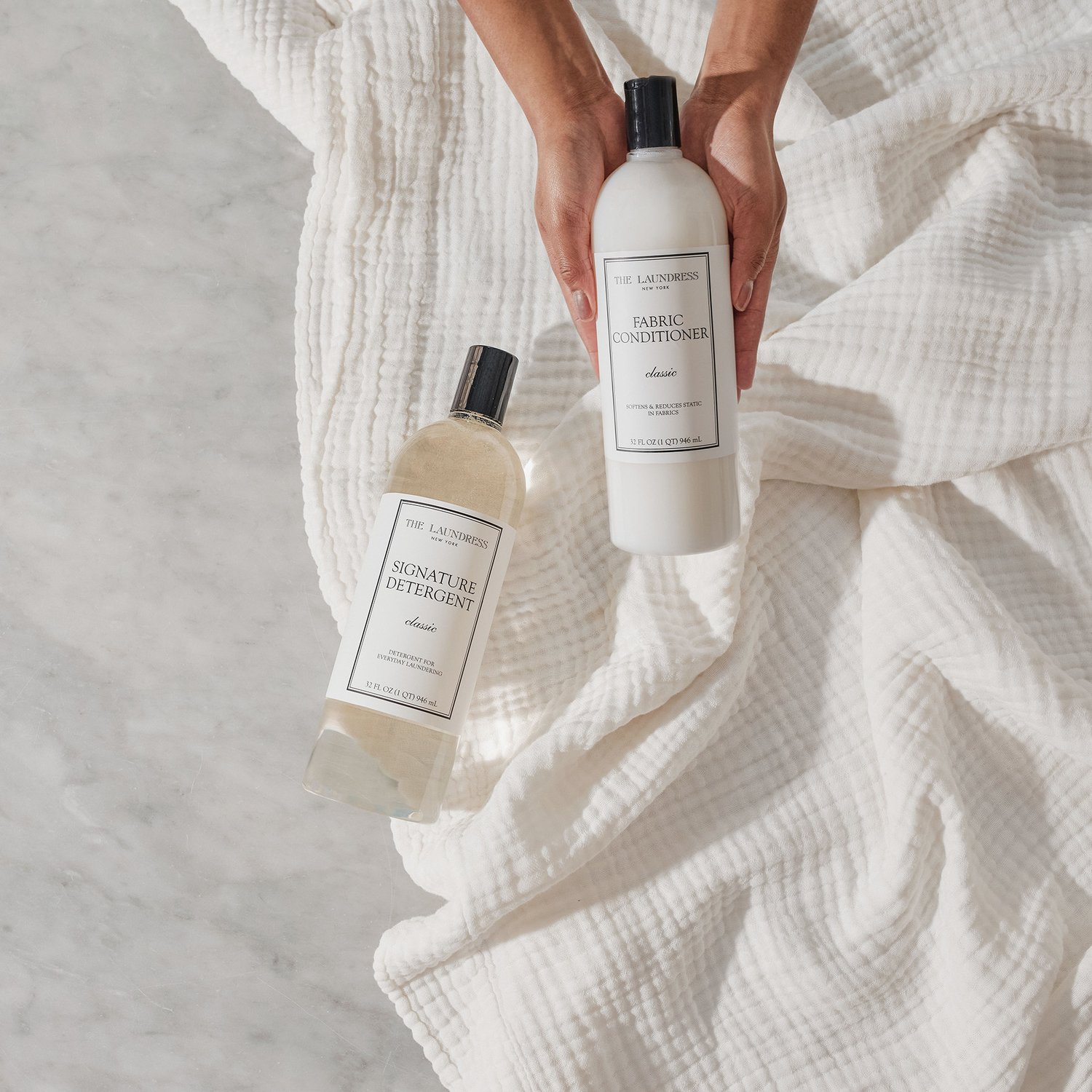
Everyday Laundry
We think of everyday laundry as common items made of cotton, poly, and other durable synthetics: bedding, socks, cotton underwear, T-shirts, khakis, and button-down shirts. Dryer cycle: Check tags, and select the dryer setting accordingly. We often use the normal cycle for everyday laundry. If you plan to iron: If you plan to iron a cotton or linen item, do not dry it all the way. Instead, remove it from the dryer when still slightly damp, then iron.
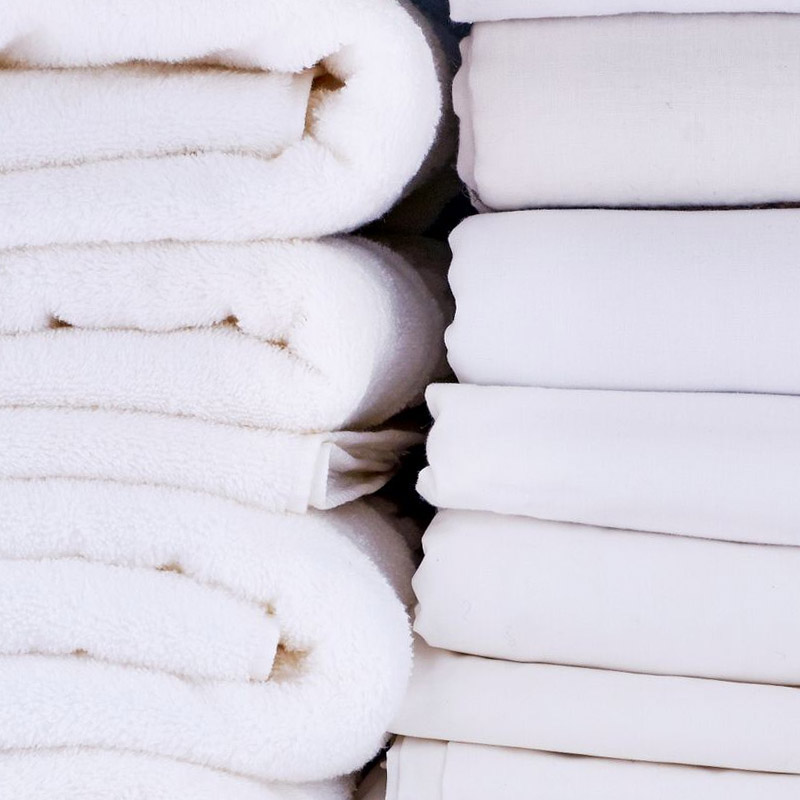
Sheets & Towels
We recommend washing and drying sheets and towels separate from everyday laundry, if possible. This helps to reduce lint and fluff transfer, and helps to ensure your items get thoroughly cleaned. Drying fitted and top sheets: Since sheets are larger than other items in a typical wash load, they tend to tangle and fold, causing smaller items to get trapped inside. Not only does this prevent mixed clothing and bedding loads from drying evenly, but smaller items can easily get lost in the tangle. The fitted sheet is one of the biggest culprits for sock-eating! To solve, simply wash and dry items separately. Drying towels: Since towels require more drying time than most other laundry items, it's more efficient to dry them separately so that you're not running the dryer for longer than you need to. Also, you don't want to over-dry other items that can't take the heat like durable towels! Toss in a set of Wool Dryer Balls to reduce static and make drying more efficient.
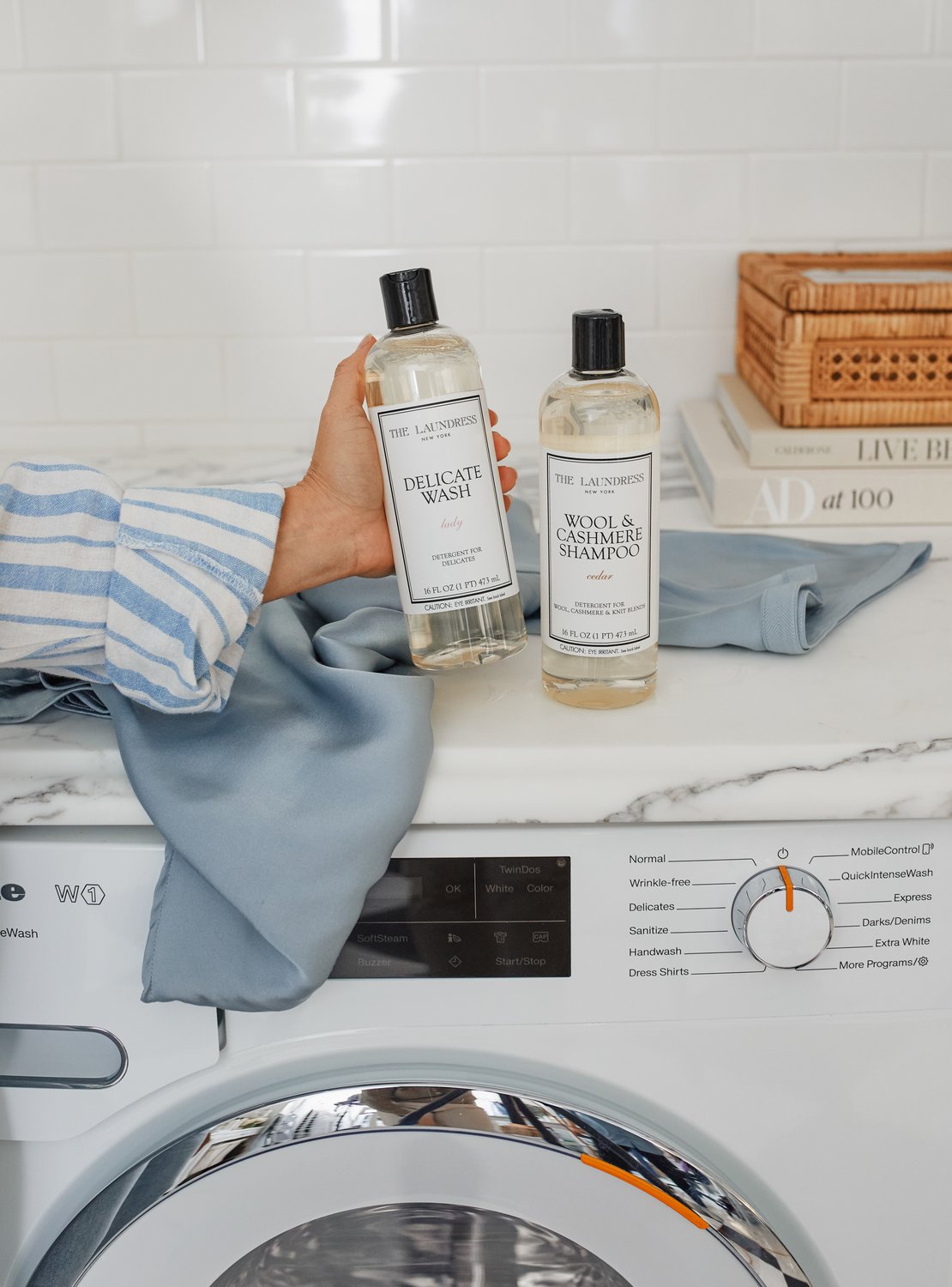
Delicates
It's best to air-dry delicates – either by line drying or lying flat. Never, ever place knits, silks, or anything tagged "dry clean" or "dry clean only" in the dryer. We promise - it's not worth the time saved. Drying synthetics and workout clothes: Keep in mind that most synthetics and workout clothes do better with air drying. That being said, if you must machine dry, select the delicate cycle. Drying delicate sleepwear: Your favorite fuzzy loungewear looks super cute now, but may be fried and frumpy after a "normal" heat dry. Instead, turn inside out and dry on the delicate cycle.
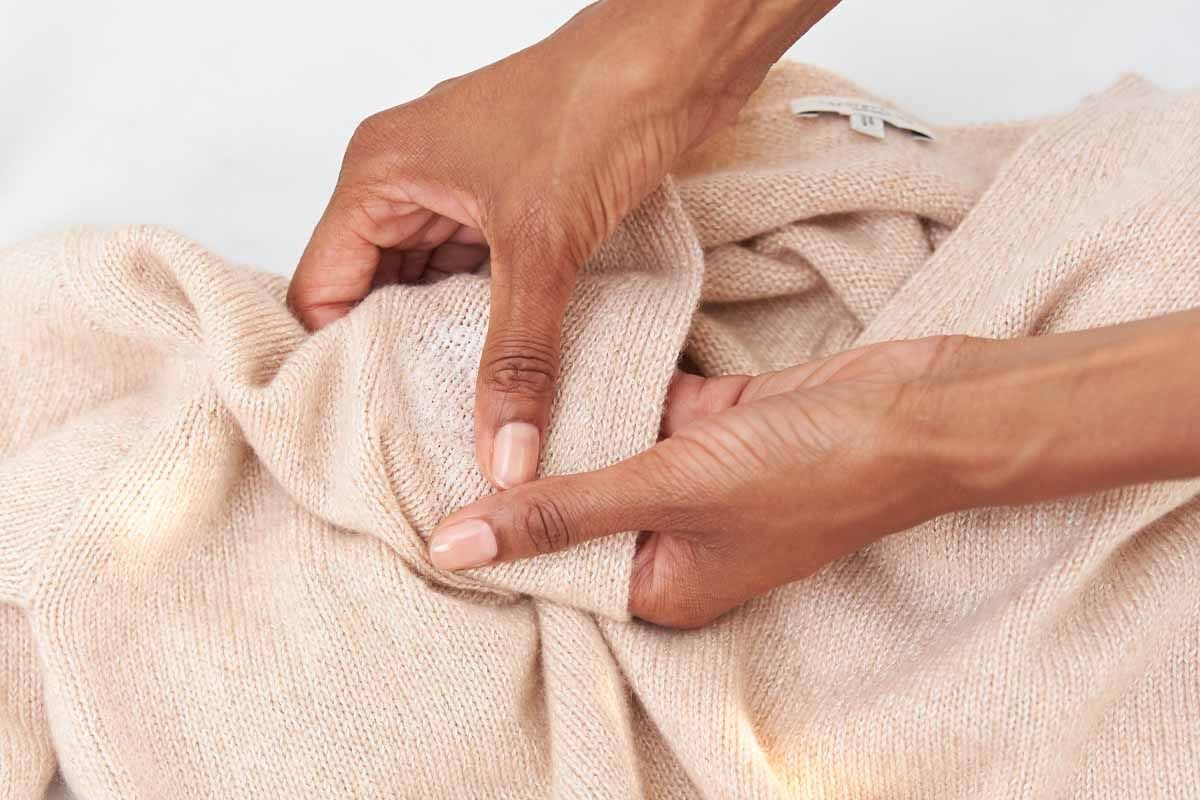
Knits and Woolens
Never use the dryer for woolens or drying cashmere sweaters. There is no adequate wool cycle on dryers. Even on a "no heat" setting, the agitation from tumbling can be enough to shrink your favorite knits. These items should always be laid flat to dry in their natural shape to dry for best results.. This helps to prevent fibers from stretching and/or deforming. To expedite drying: Place the knit on top of a towel, making sure the item is flat and in its original shape. Then roll it up in the towel (like a sleeping bag) to remove excess water. Repeat as needed until most excess water is removed, then lay flat on a table or on top of a drying rack to dry. Pro Tip: When laying sweaters flat to dry on a table or countertop, always lay down a clean towel in between the knit and the surface. This helps to protect from unwanted color bleed or water damage.
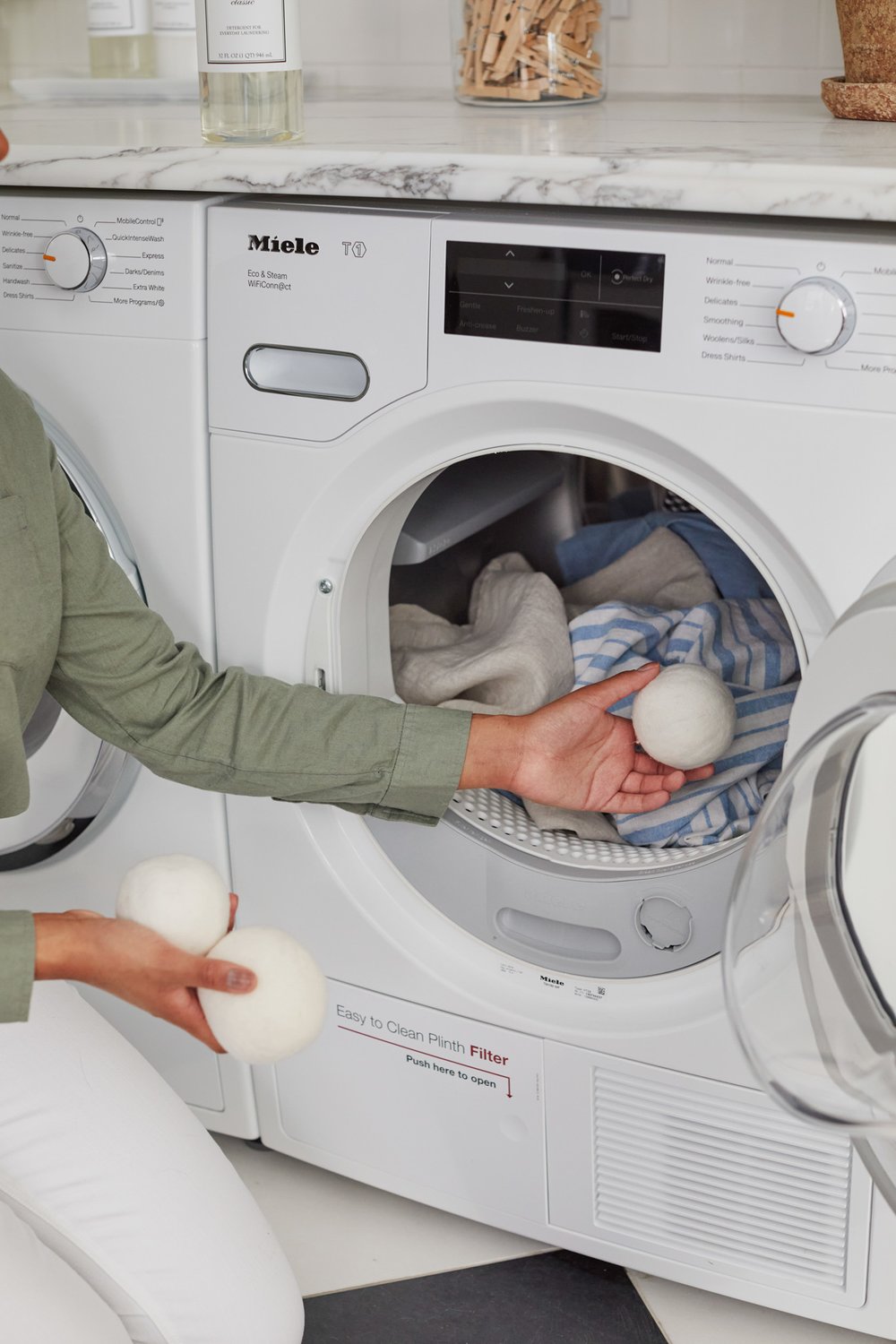
Using Dryer Sheets & Fabric Softener
Fabric softeners and dryer sheets can add scent, and reduce laundry static. Dryer sheets typically add a coating onto fabrics that makes fibers feel smooth and static-free. They help keep clothes and household items smelling fresh and static free, but are handy drying sheets the best solution for fighting odors and eliminating static? Are there drying sheet alternatives? Read on to learn more. Which is better: fabric softener or dryer sheets? The properties and function of fabric softeners or conditioners and dryer sheets are ultimately quite similar. Using fabric softener or dryer sheets helps reduces static, thereby controlling the dreaded "static cling." It's generally more effective to use liquid softener, which is more concentrated and designed to use during the wash. If you're worried about odors and stains, softeners alone are not the answer. You'll need to pair with a deep cleaning detergent (like our Signature Detergent) to get the job done. Do not use dryer sheets or fabric softener with: ♦ Flame-retardant items (e.g., children's sleepwear) ♦ Silk, wool, or synthetics ♦ Towels (fabric conditioner reduces the absorbency of fibers) What can I use instead of dryer sheets? If you're looking for something to help reduce static, try tossing a set of Wool Dryer Balls into your machine. These 100% woolen balls bounce around during the drying cycle, working to keep things fluffy and increase drying efficiency.
Therefore, we do not recommend using softener with towels. If you prefer the feel of towels after using softener, use it only with every other wash.
